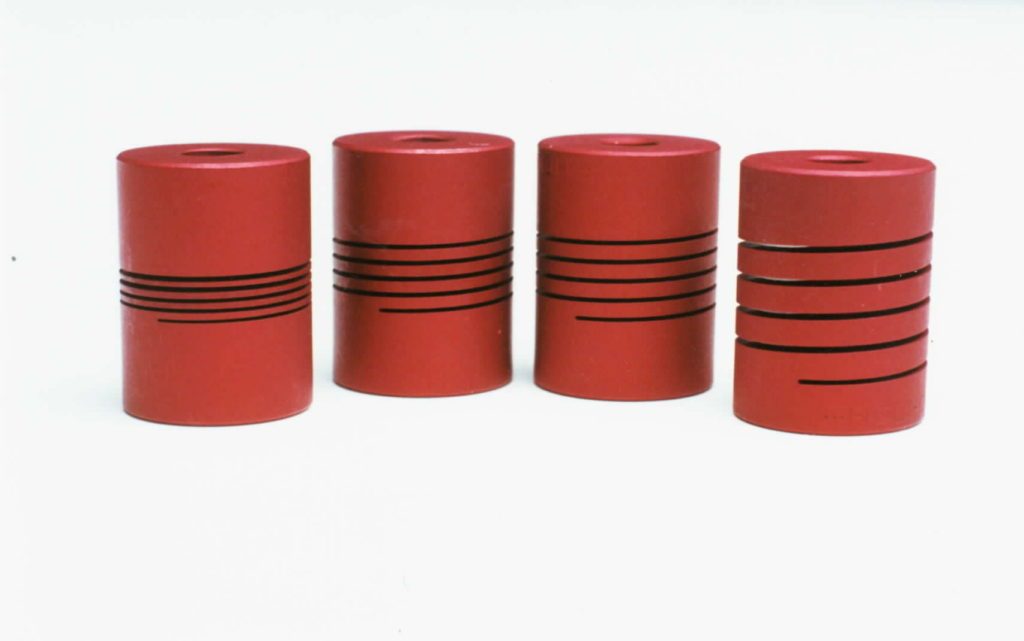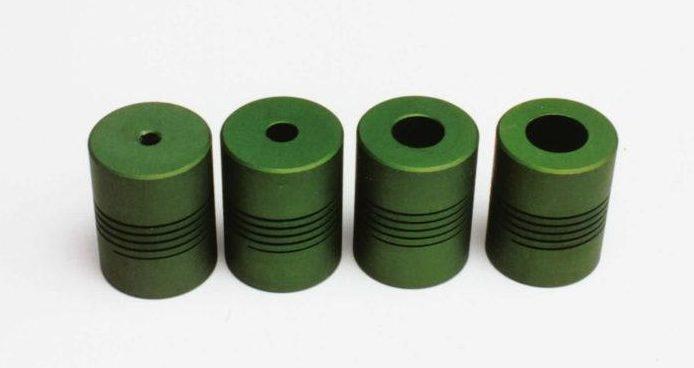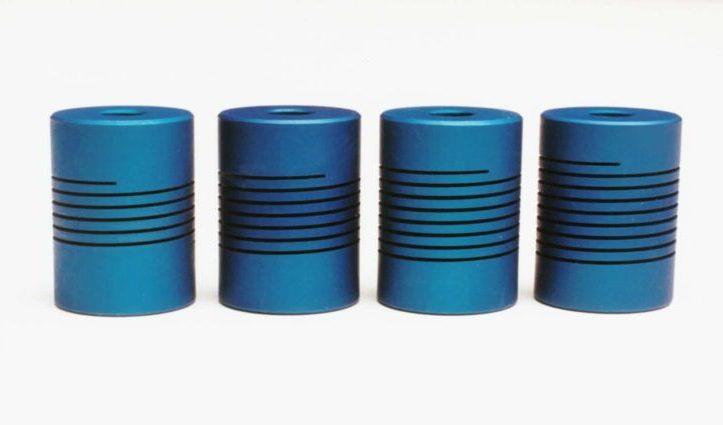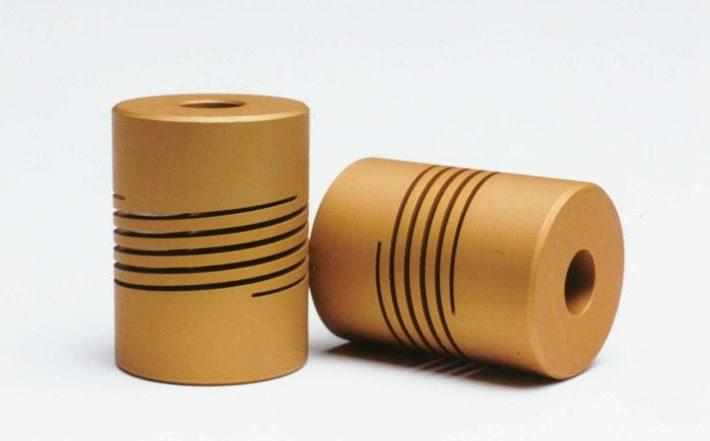Flexure Matters
Flexure Properties Enhance Overall System Performance
The inspiration for the Helical®Flexure came from the observation that one-piece “flexure” flexible couplings offered maximum versatility in terms of form, function, and reliability. Over time, the adaptability of the Helical® Flexure in couplings, u-joints, and precision machined springs has helped to solve thousands of mechanical misalignment problems. The flexing qualities of the “flexure” can be customized to compensate for angular and skewed misalignment, parallel offset, and axial motion. All of this can be accomplished while maintaining constant velocity rotation and smooth bearing loads.
Helical® Flexures can be designed to customer specifications by simply changing coil dimensions and/or materials. Each of the following flexures is made from the same material and has the same outside diameter and length. These groups of matching colored flexures demonstrate how varying a single characteristic can influence performance.
The "Flexure" Concept Promotes Application Versatility
The four red flexures below are identical in outside diameter (OD), inside diameter (ID), length, and the number of coils. The only difference is the coil thickness. Changing this feature affects torque, angularity (bending moment), parallel misalignment (radial load), torsional rate, and compressions spring rate.
All other things remaining equal, as coil thickness increases, so do torsional stiffness and torque load rating.

All of the green-colored flexures are identical with the exception of the inside diameters (ID). This change affects the torque, bending moment, radial load, torsional rate, and compression spring rate.
As ID increases in otherwise identical flexure, torsional flexibility increases, and torque load rating decreases.

The only difference between each of the blue-colored Helical® Flexures is the length of the coil. Changes in flexure length affect angularity, radial load, torsional rate, and compression spring rate. However, torque capacity remains constant.
With varying coil length, torque capability remains constant while other performances properties change.

Our gold flexures are multi-beam designs. Multi-beam flexures have two or more coaxial beams. The difference between a single beam and multi-beam flexure is analogous to the difference between a single and multi-lead screw. The effect of changing the number of flexure beams, with all other factors remaining constant, will result in changes to all five performance criteria.
Variations in the previously mentioned characteristics affect the performance of the flexure in dramatically different ways. Altering these factors results in performance changes that may be linear, by the square, or by the cube.
Changing the number of beams significantly changes all performance characteristics.

MW Components' engineers manipulate the various attributes of the flexure to create products that meet the performance criteria specified by the customer. To this point, we have only discussed what can be done by changing the flexure geometry. This is only the beginning. When you consider the additional utility that can be achieved by varying the material from which the flexure is made or integrating custom end attachments into the product design, you realize there is more to Helical® Flexure Technology than originally thought.
With all of this versatility, the only missing ingredient is the imagination of the design engineer. Helical® Flexure Technology is definitely more than a means to connect two shafts; it’s a mechanical solution!
Have Questions?
Talk with our experts today and let us help you figure out the best solution.